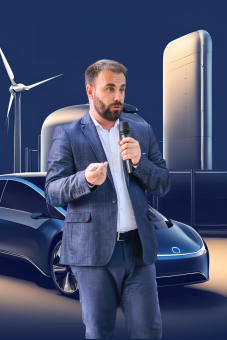
The use of electric vehicles (EVs) provides a double benefit—it protects the environment by emitting no harmful gases and allows savings for vehicle owners. A paradigm shift in mobility through education, innovative solutions, and integrating the latest technologies is transforming how organizations and individuals perceive mobility. This is precisely the mission of the 360°Mobility consulting agency, a member of the National eMobility Cluster within the Chamber of Commerce and Industry of Serbia.
Serbia’s EV subsidy system has been recognized as a good practice on the path to decarbonizing transport, but there is room for improvement. The current subsidy model treats all electric vehicles equally, despite significant differences in their segments and price categories.
“Subsidized EV procurement should focus on mass mobility, that is, more affordable electric vehicles, instead of equally incentivizing the purchase of premium models. Introducing price brackets into the subsidy system—for example, for vehicles priced up to 50,000 euros and subsidies covering at least 10 percent of the gross value—could make the system more efficient,” says Filip Mitrović, founder of 360°Mobility.
The current 5,000 euros subsidy applies exclusively to fully electric vehicles (excluding hybrid variants), which is a good policy. Still, insufficient marketing coverage and lack of transparency in fund allocation remain issues.
Mitrović suggests that it would be beneficial to publicly disclose on a monthly basis how much subsidy funding remains available, to help potential buyers plan more effectively.
IN FOCUS:
- Volvo Trucks – The Market Leader in Electric Trucks in Europe and North America
- Complete EV Charger Offer With New Schneider Electric Models
- Sustainable Mobility Rooted in Innovation
Subsidizing specific categories, such as light delivery vehicles, taxis, and shared mobility services, would also significantly reduce harmful emissions in urban areas.
While the application process has been simplified compared to previous years, Mitrović believes that, in the era of digitalization, further improvements could be made by enabling online applications.
Eliminating import duties on electric vehicles would significantly reduce prices and accelerate the transition to e-mobility. The current import duty in Serbia is 5 percent, directly increasing the cost of EVs and making them less competitive than internal combustion engine (ICE) vehicles. Good examples include Montenegro, which has reduced EV import duties to just one percent regardless of the vehicle’s country of origin, and Bosnia and Herzegovina, which went a step further by entirely eliminating all customs duties on EVs through a regulation that is easier and faster to implement than a law— yet equally effective.
“In addition to subsidies and eliminating customs duties, Serbia could implement a progressive subsidy model—with higher incentives for vehicles with smaller batteries and lower prices, making EVs more accessible to a broader population. Additional tax incentives, such as lower registration fees, abolishing ecotaxes and other charges, would also be strong motivators.
Prepared by Jasna Dragojević
Read the story in the new issue of the Energy portal Magazine SUSTAINABLE MOBILITY

